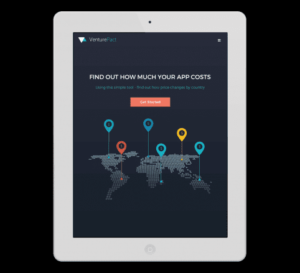11 Marketing Challenges in 2023 and How to Conquer Them
Table of Contents
Want to overcome marketing challenges and learn strategies to grow your business? Keep reading!
The future’s in the air. Can feel it everywhere, blowing with the wind of change…The changing digital landscape brings with it its own unique set of marketing challenges. But we know that where there are challenges, there are opportunities. And where there are opportunities, there’s Outgrow to help you make the best of them! 🙂
So, let’s get started with the marketing challenges of 2023 and their solutions.
1. Customer-driven Market
Today’s market is more customer-centric than ever before. Buyers tend to identify with a brand, decide what features they want, what sort of interactions they’d like to have, on which touchpoints they want to engage with the brand, and more. This makes it a huge challenge for brands to be present in the right place at the right time and with the right messaging.
Unless you’re a fish, it’s not a great place to be! So, what’s the solution? A customer-centric strategy!
A customer-centric strategy is one in which you add value to every interaction that the customer has with your brand. And you do this for all your customers throughout your sales funnel.
This calls for studying individual customer journeys and understanding what they are looking for. You need to research your audience, what type of content they prefer consuming, in what form, and on what channel.
Creative storytelling, interactive content (like quizzes and tests) and informative blogs make users aware of their problems and the need for solutions. So, these work best for top-of-the-funnel leads.
Whereas, personalized emails with demos, multichannel communication with offers, ROI calculators and user-generated content create brand awareness and recall. Hence, these should be aimed at customers that are at the lower end of the funnel.

Read More: How interactive content works for each stage of the buyer’s journey
2. Creating Compelling Content Fast
Every day your target audience is bombarded with hundreds of videos, images, text, and podcasts in their inbox, social media feeds, and messaging apps. So, how can you make your content stand out in order to make it unique and retainable?
Well, this requires creativity, innovation, smart tools, and an awareness of current marketing trends. Not to mention, a well-thought-out content plan makes for the foundation.
Content planning should ideally be done a month in advance. Moreover, using an SEO tool for trending topics, keywords, and top articles is imperative. And while you’re at it, keep an eye on competitor posts. Take a look at their videos that are getting more engagement on YouTube, podcasts that are more popular, events that they are holding on Facebook, etc. As you would have guessed, this requires a team effort.
Today, people want quick and effective solutions to their searches. That’s why tips, hacks, and listicles get a lot of likes, shares, and comments. So, you should try to make your blogs, landing pages, and emails interesting by adding visuals like images, gifs, maps, and infographics.
Interactive content like calculators, surveys, quizzes, and polls grab user attention more quickly than static content. This is because the user gets to actively participate in generating value. And that inculcates a sense of association.
If you’re at a loss for interactive content ideas on a particular topic, take help from the amazing Outgrow Idea Generator.
3. Going Mobile-first
If you’ve ordered groceries or listened to music or read the news recently, chances are that you’d have done it on your mobile. Not just you, according to Think With Google, more than 92.3% of users browse the internet on their smartphones. This number will only continue to increase exponentially. Hence, content creators all over the world are reviewing and revising their processes and workflows. They want to first build for the mobile and then for desktops and other larger screens.

What does this mean for us as marketers? It means that we need to prioritize and focus on presenting our core product and the features that make us truly unique. This necessitates keeping the user interface simple and clutter-free.
This would not just mean having your new content mobile-friendly but also revamping the old ones to be compatible across devices.
Similarly, the designs need to be minimalistic showing only relevant content. On the development front, you should have your team test and monitor the functionality and performance of your application using tools like Appium.
4. Keeping Up With Privacy Regulations
Ah, the great cookie crunch! The paradox of personalized experience and consumer privacy haunts many of us. Marketers everywhere are walking the tightrope where customers want highly personalized and contextually-relevant content, while not wanting to share too much information.
Government regulatory bodies have also become more stringent than ever to uphold the individual’s right to protect their identity. This entails staying up to date with state and federal privacy regulations like California Consumer Privacy Act (CCPA) and General Data Protection Regulation(GDPR) for the EU and how they affect you.
Further, make sure that your audience gives their informed consent to your activities of data storage, collection and processing. Give them the choice of opting out or sharing limited details.
Also, go for better alternatives like first party and zero party data collection. You’ll be delighted to know that the data collected through these methods are way richer, more authentic, and more relevant than third-party data that a lot of businesses used to buy.
Besides, privacy laws also give individuals the right to be forgotten (deleting all their data from your sources) and the right to portability (meaning you should be able to share their data with them if they ask). So, ensure that proper data management systems are in place. It is pretty evident that keeping track of privacy regulations is no small feat. So, don’t hesitate to reach out to legal advisors in order to get your privacy policies reviewed and redrafted.
5. Making Your Website Accessible
Website accessibility is the inclusive practice of eliminating barriers that may hamper the user experience. It is about meeting the needs of ALL customers including those with physical disabilities, situational challenges, or technological restrictions. This can, however, be challenging for smaller organizations with less manpower.
Here are five things you can do to have a more accessible website:
- Use a CMS (Content Management System) that is accessibility-friendly and choose the right themes, plug-ins, and widgets.
- Make use of alt text for images. This makes it easier for users to understand the message communicated through the image. This is especially useful in cases where the images fail to load.
- Organize the structure of your content using proper header styles.
- Support color with visual indicators (question mark or asterisk) for people with low vision and color blindness.
- Make sure that video content does not auto-play without user consent or keep the volume off if it has to.
- Use an automated accessibility tester to identify existing accessibility gaps.
6. Generating Qualified Leads
Our marketing efforts are directed toward generating as many leads as possible. But how many of those are good quality? And how to convert good quality leads into paying customers?

These are the challenges that marketers face in all their campaigns. But good marketers know the secret to generating and converting leads through their marketing efforts.
The most important thing is to understand your leads, their buying habits, lifestyle, income, age, gender, life stage, etc. This helps you create informative content that provides value to them. By informative content, we mean ebooks, guides, tips, lists, hacks, cheat sheets, short courses, webinars and podcast recordings, industry reports, etc. These are also powerful lead magnets that can be used on Facebook ads or landing pages.
Another type of lead magnet that is fast and easy to create is a content upgrade. Current readers of your blog will get prompts to download more valuable content. On clicking the prompt, they will be asked to enter their email id.
Furthermore, using interactive content is a proven way to generate qualified leads. Calculators, quizzes, surveys and polls seek active user involvement and anyone who takes the pain is genuinely seeking solutions. Moreover, interactive content can be easily embedded in social media posts, emails, landing pages, etc.
Business Case Study
VenturePact, a software development marketplace, was looking to accelerate business growth. They were already doing blogs, ebooks, SEO and social media but their conversion rate was not satisfactory. They needed to breathe new life into their content and wanted something that provided instant gratification. Outgrow had a brilliant solution for them!
Read More: How an Interactive Calculator Generated 11,592 Qualified Leads!

7. Keeping Up With Google’s Algorithms
Agility, thy name is Google! Google algorithms are updated hundreds of times every year. Though most of them are minor, some updates can send even the most experienced SEO experts on the edge.
But, fortunately, we have tools like Google alerts and SEMrush that can help us stay on top of these updates. Not only do these tools help you keep up with changes in your keyword rankings, but they also show what your competitors are ranking for.
You can use inputs from these tools to create or update content and add more value in order to regain your rankings. Besides that, it makes sense to hire SEO specialists who possess the skills and knowledge to revamp your SEO strategy and undo the detrimental effects that updates may have had on your website.
8. Maintaining a Unique Brand Identity
With so much competition and so little space, building and maintaining a unique brand identity is extremely challenging. Brand building requires constant and consistent efforts where you create content that your target audience can remember and recall.

So, what can you do to build a powerful brand identity?
First, know your audience through market research. This helps you target them with the right messaging at the right time and place.
Second, keep your brand elements like logo, colors, tagline, font, and voice consistent. Think Apple or Netflix…what do you see?
Third, be creative. It’s a Tide ad. Need we say more?
Fourth, is social listening. Know what is being talked about you. This can help you correct mistakes and take proactive decisions.
9. Establishing an Omnichannel Marketing Strategy
Most customers today access the internet on multiple devices. They may have come across your product on their smartphone through a YouTube ad, noticed it on a subway billboard, or checked its Amazon price on their office desktop, only to go to the store to make the purchase!
When the purchase decision can be made through any channel, at any location, on any device, it’s a huge heads-up for marketers to create a seamless brand experience.

But how can you acquire, engage and retain customers across multiple channels all at once?
Creating an omnichannel marketing strategy is the answer. It involves getting a deep understanding of your customers, their pain points, the channels they are active on and then anticipating and planning their journey. Use CRM tools and data analytics to trace each buyer’s journey. This will help you identify common behavior patterns and predict where they will land so that you can be prepared for them with the right content.
Remember your team is also likely to use multiple channels and devices, particularly if they work under a hybrid or remote policy. So consider providing them with a remote access tool that enables them to update things like content schedules, platforms, and KPI reports in real-time, no matter where they are. When implemented as part of your wider marketing strategy, these tools are also beneficial for boosting collaboration between teams and departments and improving productivity.
10. Managing Remote Workforces
So far it’s been about your customers who are outside the organization, dealing with internal challenges is no cakewalk either. The pandemic had turbo-charged the practice of remote working and with that came the necessity to change existing rules, adopt new tools and develop a more trusting attitude towards remote team members. Hardly easy, is it?
Fortunately, technology again comes to the rescue. Video conferencing hardware, apps, remote access tools, communication, free project management software (with a Gantt chart facility), and file sharing software & digital decluttering software make it easy to interact with your teammates. And the good news is, they are not very expensive either.
Get started with collaboration tools for remote marketing teams here.
11. Proving the ROI of Marketing Campaigns
As a marketer, you’re doing your best, running campaigns, and keeping an eye on important metrics, opportunities as well as competitors. But at times it becomes difficult to prove the effectiveness of marketing efforts.
After all, there are so many intangibles – brand awareness and recognition, goodwill, loyalty, and more. How do you measure those? Further, how do likes, shares, and clicks help the organization make money? How do you justify the marketing expenses related to them?
First and foremost, every marketing campaign should begin with a strategy. This consists of a plan, its costing, anticipated result, the estimated value derived, and a comparison with past campaign results (if any).
Next, state your goal. How much web traffic do you aim to get? How many followers are you expecting on your social media channels? What sort of user engagement are you targeting?
And once your campaign results (traffic) are in, you need to convert these into monetary value. Here you will need some historical data about your company. What is your traffic-to-lead conversion rate, and your lead-to-customer ratio? What is your customer lifecycle value?
All this information will give you an idea of which variables you should use to calculate the ROI of your marketing campaign.

If you’re getting a picture of what we’re saying, you would want to check how to improve your marketing and sales ROI with interactive content. In addition, for social media engagement ROI, you will need to use tools like Google Analytics, Facebook pixel and UTM parameters.
Wrap Up
As you have realized by now, marketing challenges will always appear. You don’t have to buckle under their weight. Simply dodge them with the right set of tools and techniques. Moreover, don’t forget to use interactive content to boost your traffic and generate new qualified leads.
What are some marketing challenges that you have faced in your industry? How did you get over them? Do let us know in the comments section below.
Psst, you have unlocked a free 7-day trial of Outgrow Interactive Content Tools. Explore our tools and create interactive content now!

Parmita is a full-time content marketer at Outgrow. In the past, she has written extensively for the marketing, education, and healthcare industries. Apart from creating great content, she can’t resist white chocolate, cat subreddits, and colorful home décor.




